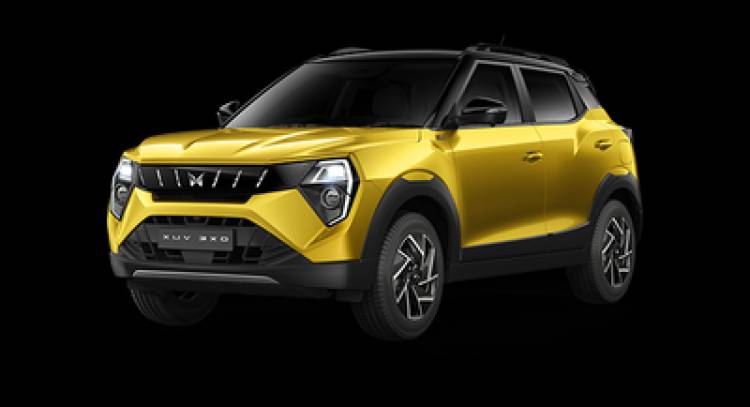
The Impact of Mahindra Auto’s Vehicles on Rural Transportation
Mahindra & Mahindra (M&M) has been a pioneer in providing rugged, reliable, and affordable
vehicles to rural India for more than 70 years. From farm equipment like tractors and harvesters
to small commercial vehicles and durable passenger vehicles, Mahindra vehicles are ubiquitous
across India's villages and hinterlands.
This widespread adoption of Mahindra vehicles has significantly impacted rural transportation and connectivity. Mahindra vehicles have enhanced rural livelihoods, empowered marginalised communities, and supported broader infrastructure and social development. At the same time, Mahindra prioritises sustainability through green technology and reduced emissions from its vehicles operating in rural areas.
Overview of Mahindra Vehicles Popular in Rural Areas
Utility Vehicles (UVs)
Mahindra is the leading manufacturer of rugged and dependable UVs ideally suited for rural conditions. Vehicles like the Bolero and Scorpio have proven their durability on broken country roads. With good ground clearance and four-wheel drive options, these vehicles can easily tackle flooded dirt roads, gravel tracks, and rocky terrain.
Affordably priced and backed by Mahindra’s extensive service network, these vehicles meet the unique demands of rural transportation. No wonder over 2.2 million Boleros ply on Indian roads, making it the longest-running Mahindra Auto SUV in the country.
Commercial Vehicles (CVs)
Mahindra’s last-mile pick-up trucks and small commercial vehicles like Jeeto, Supro, and Imperio power rural businesses. These rugged, no-frill vehicles provide cost-effective transportation of goods critical to the rural economy.
Be it household shifting to a city, ferrying livestock or fresh farm produce to markets, or supporting a local enterprise, Mahindra CVs are the vehicles of choice. Their reliability, payload capacity, and running costs suit shallow rural pockets.
Tractors and Farm Equipment
With over 30 models across various horsepower ratings, few companies can match Mahindra’s dominance in India’s tractor market. Over the years, Mahindra tractors have ushered in agricultural prosperity through mechanised farming.
Mahindra's guiding principle when designing advanced tractors and specialised farm equipment is increasing farm productivity and income in an eco-friendly manner. With over 5 million units sold, mostly in rural areas, Mahindra tractors have played a seminal role in revolutionising Indian agriculture.
Economic Impact on Rural Communities
Enhanced Livelihood Opportunities
Mahindra vehicles have opened up new livelihood options for rural residents. By transporting produce or goods more efficiently to nearby towns, farmers and village businessmen are able to trade in bigger markets and increase earnings. Village youth also provide transportation services between villages using Mahindra vehicles, supplementing agri-income through this micro-enterprise.
Agricultural Benefits
Mechanised farming equipment from Mahindra SUV, like tractors and harvesters, has boosted productivity and yields per acre. Using advanced equipment has helped farmers adopt modern techniques of crop and soil management. Multiple cropping cycles are possible now, while some farmers have switched to commercial horticulture or cash crops. Overall, technology has made farming more efficient and lucrative.
Support for Local Entrepreneurship
Mahindra vehicles have encouraged entrepreneurship and self-employment among rural groups. Village youth with limited education are gaining financially by using Mahindra vehicles to ferry people or goods locally. Farmers use mini-trucks to transport milk or vegetables to nearby towns. With enhanced mobility, villagers are able to start small businesses in transportation, logistics, or supply domains, improving the local economy.
Infrastructure Development and Connectivity
Connecting Remote Villages to Markets
The intrinsic ruggedness to endure abuse on the very last mile of Indian roads makes Mahindra vehicles invaluable in bridging rural communities to bigger towns and markets. By facilitating multi-modal connectivity through railways or highways, Mahindra vehicles are integrating remote villages better through new economic opportunities.
Access to Essential Services
Rural hospitals, schools, and government centres have come to rely on Mahindra vehicles for outreach activities and mobile services to reach distant villages. Ambulances, mobile health camps, and enrollment drives count on the reliability of Mahindra vehicles to deliver critical services deeper into rural pockets, thereby improving villager access.
Social Impact and Improved Quality of Life
Affordable and Reliable Transportation
Personal mobility remains unaffordable for rural Indians even today. By offering robust, value-for-money vehicles like the Bolero Pik-Up or the Jeeto mini-truck, Mahindra has provided cost-effective transportation solutions for villager groups or community-based organisations.
Empowerment of Women and Marginalised Groups
An unexpected upside of increasing rural mobility powered by Mahindra vehicles has been the economic and social liberation of subaltern rural groups like women, scheduled castes, or landless labourers. By facilitating new livelihood opportunities through vehicle transportation services, Mahindra Auto has contributed to the financial independence and empowerment of weaker rural sections.
Environmental Considerations and Sustainability Initiatives
Shift Towards Green and Sustainable Mobility
For rural mobility needs, Mahindra is emphasising eco-friendly CNG, electric, and hydrogen fuel cell options across its commercial and passenger vehicle portfolio while expanding its biofuel- compatible tractor offerings.
Reducing Carbon Footprint in Rural Areas
Sustainable mobility is a strategic organisational goal for Mahindra, and it is achieved through efforts like planting trees equal to the number of autos sold or boosting energy efficiency in operations. Mahindra also aims to reduce air pollution and minimise the ecological impact of rural transportation through optimised engines, regular emission checks, and end-of-life recycling of older vehicles.
The Bottom Line
Mahindra vehicles have transformed rural India’s economy and connectivity in the last seven decades. Mahindra has helped bridge income, access, and aspirations gaps for rural communities by empowering farmers and common villagers with reliable mobility solutions. With sustainability as a core focus going forward, Mahindra vehicles are poised to be the heralds of positive change, enabling a developed rural India in the 21st century.










